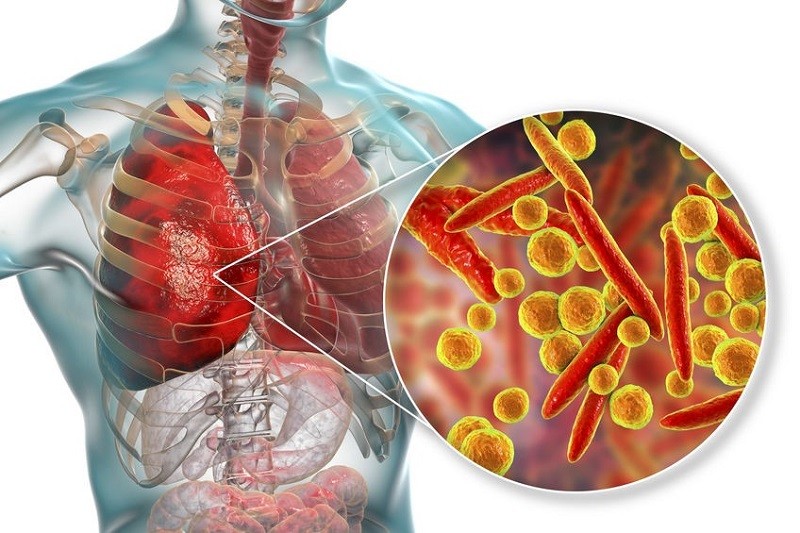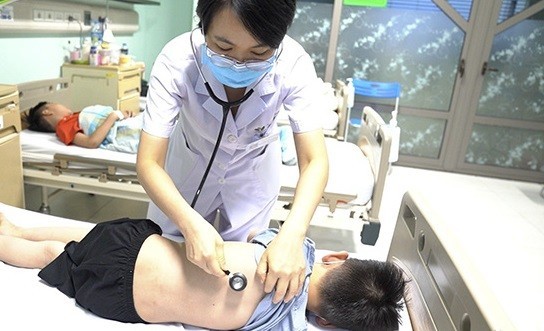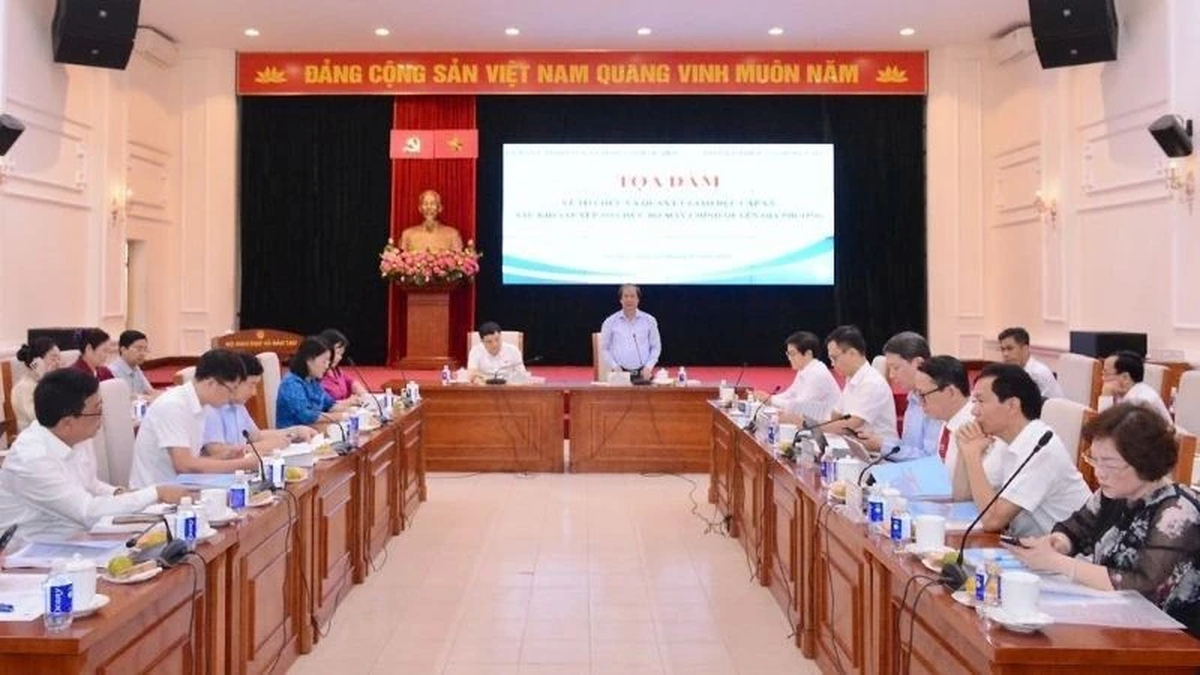The Pediatric Center, Bach Mai Hospital has recorded a number of cases of pediatric patients with severe pneumonia complications requiring oxygen therapy and a number of cases of drug-resistant lobar pneumonia caused by mycoplasma pneumoniae bacteria.

Nearly 40% of hospitalized children have pneumonia caused by mycoplasma pneumoniae bacteria.
Recently, the Pediatric Center, Bach Mai Hospital recorded many children with pneumonia who had to be hospitalized for treatment. Of these, the rate of M. pneumoniae infection accounted for 30-40% of pneumonia patients.
Master, Doctor Do Hoang Hai, Pediatric Center, Bach Mai Hospital said, mycoplasma pneumoniae (M.pneumoniae) is one of the agents causing community-acquired pneumonia in children and also manifests some pathologies in organs other than the lungs.
Mycoplasma pneumonia is caused by the bacteria mycoplasma pneumonia. This type of pneumonia is also called atypical pneumonia because the symptoms are different from those of other common bacterial pneumonias.
M. pneumoniae has adhesion proteins that can attach to epithelial membranes, especially respiratory epithelia. After attachment, M. pneumoniae produces hydrogen peroxide or superoxide, which damages epithelial cells and ciliated cells. M. pneumoniae has the ability to “burrow” between the cilia in the respiratory epithelium, eventually causing sloughing of the respiratory epithelium. Prolonged cough results from inhibition of ciliary cell movement.
M. pneumoniae can be mild and have nonspecific symptoms but can account for up to 20% of community-acquired pneumonia cases, especially in children.
M. pneumoniae is also one of the factors that trigger wheezing or asthma attacks in children, as well as affecting a number of organs other than the lungs including: skin, mucous membranes, muscles, joints, heart and central nervous system.
Pneumonia caused by mycoplasma pneumoniae can be gradual and subacute, the child may have a low-grade fever that then progresses to a higher fever and persistent cough. The incubation period can be 2-3 weeks. Initially the child may have upper respiratory symptoms such as: cough, sneezing, runny nose, low-grade fever.
The disease can then progress or cause complications such as pneumonia leading to high fever, persistent cough, difficulty breathing, some older children may develop acute asthma attacks or have other atypical symptoms such as headache, muscle pain, chest pain, etc.
In the United States, researchers estimate that there are more than 2 million cases of M. pneumoniae infection each year.
Mycoplasma pneumoniae can also cause extrapulmonary diseases and respiratory tract infections such as: immune thrombocytopenic purpura, acute hepatitis, autoimmune hemolytic anemia, arthritis and transverse myelitis due to the production of antibodies against the glycolipid antigen of Mycoplasma pneumoniae that cross-react with human red blood cells and brain cells by an autoimmune mechanism.
Mycoplasma pneumoniae infection is most common in school-age children and adolescents, but can occur at any age. Children who live and study in crowded environments are at higher risk.

Dangerous complications of pneumonia caused by mycoplasma pneumoniae
When there are signs of suspected atypical pneumonia, parents should take their children to a pediatrician for an accurate diagnosis and appropriate treatment.
Serious complications are uncommon, but can result in hospitalization and sometimes death. Complications include: severe pneumonia, acute onset of asthma, encephalitis, hemolytic anemia, renal failure, Stevens-Johnson syndrome…
When there is clinical suspicion, doctors will order tests for children to determine the presence of Mycoplasma pneumoniae such as: Bacterial culture to find bacteria on special culture media; PCR is a highly sensitive and specific method, currently used in specialized medical facilities; serological diagnosis by ELISA to detect the presence of IgG and IgM antibodies in the serum.
Antibiotics are the first-line treatment for pneumonia caused by Mycoplasma pneumoniae. Mycoplasma pneumoniae bacteria lack a cell wall and are therefore resistant to beta-lactam antibiotics. Most patients do not respond to conventional antibiotics.
Some patients with severe complications or infection with drug-resistant Mycoplasma pneumonia will need to be hospitalized for specific treatment.
If Mycoplasma disease is not detected and treated properly, it will cause dangerous complications for the patient and can spread widely in the community. Therefore, everyone should see a doctor immediately when having unusual symptoms such as fever, fatigue, persistent cough at reputable medical facilities.
Regarding infection prevention, there is currently no vaccine for M. pneumoniae. Patients should be counseled on infection prevention and control during outbreaks. Patients with M. pneumoniae infection should be placed on droplet precautions throughout the duration of the illness.
"Bacteria are transmitted from person to person through droplets in the air, which only happens when there is close contact. Therefore, the most effective way to prevent the disease is to wear a mask," Dr. Hoang Hai recommended.
According to nhandan.vn
Source link



































































































Comment (0)